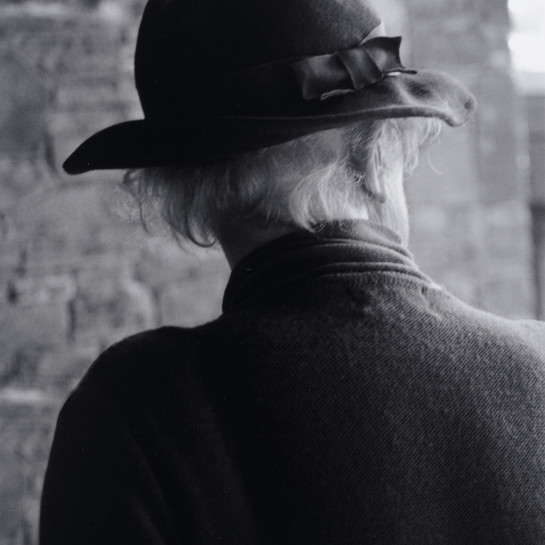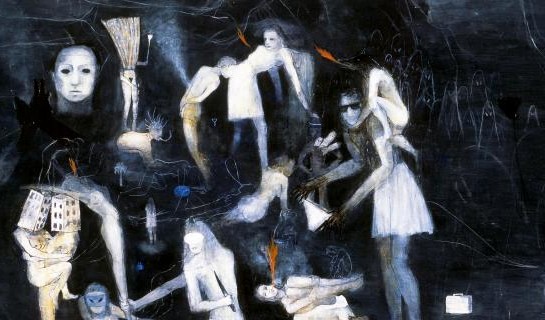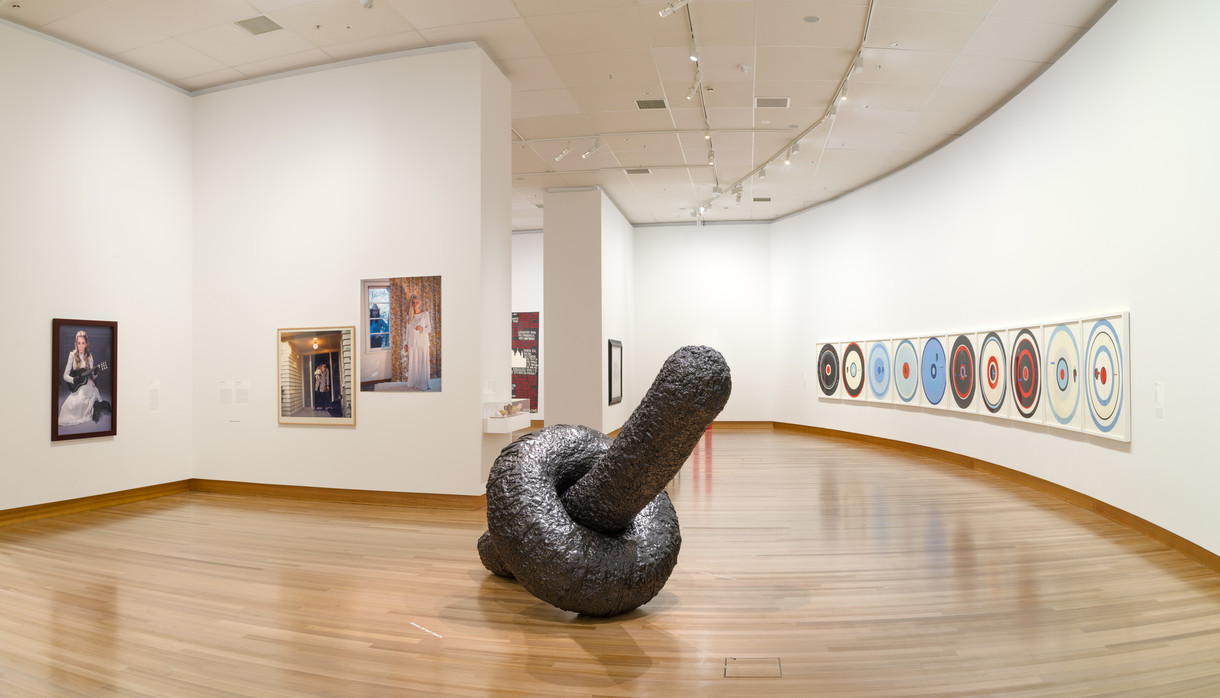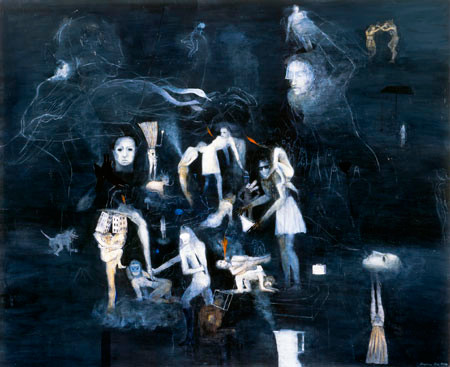Séraphine Pick
Aotearoa New Zealand, b.1964
Untitled
- 1998
- Oil on canvas
- Purchased 1998
- Reproduced with permission
- 1370 x 1670mm
- 98/123
Tags: animals, birds (animals), daggers (weapons), dogs (animals), eroticism, flames, ghosts (spirits), kettles (vessels), masks (costume), mythical or legendary beings, nudes (representations), people (agents), record players, sex (biological characteristic), suitcases, sunglasses, trees, women (female humans)
Séraphine Pick is interested in intangibles. Her fluid, open-ended works suggest much, but confirm very little. Here, restless objects and figures break through a smoky blue-black field. Some are vividly painted, others only fragments, like half-remembered dreams or glimpses from flickering screens. Pick further complicates our experience with a series of cloaking devices – masks, hats, sunglasses, steam and smoke. “When you take something away,” she has said, “it makes people work at their own imagination, based on their own experiences. [They] have to think beyond what is there to fill in the gaps.”
(Absence, May 2023)
Exhibition History
The focus of this painting is largely psychological. Figures and objects appear to emerge and recede between layers of paint, suggesting visions, memories or dreams, some of which are remembered clearly and others that return only as fragments. Although Séraphine Pick’s painting offers the viewer a choice of many possible interpretations, one obvious theme is that of changing or uncertain identity, shown in the concealment of faces through masks or blurring. Pick has painted some forms and figures onto wet paint, creating a faint, ethereal effect. Spaces are deliberately vague and planes overlap and interpenetrate with an individual logic and seemingly casual randomness which creates its own tensions and ambiguities.
Pick was born in Kawakawa in the Bay of Islands and graduated from the University of Canterbury in 1988. She was the recipient of the Olivia Spencer Bower Award in 1994 and in 1995 was chosen as the Rita Angus Artist in Residence. Pick was the Frances Hodgkins Fellow at the University of Otago in 1999.
Resembling writing and doodles which have been half erased from a blackboard, Untitled can also be read as a painted diary or an intimate stream of consciousness. There are many interlacing layers in the painted surface and in the imagery, which incorporates subject matter from popular culture, childhood memories and personal, often sexual, experience. Obeying the rules of memory rather than reality, the figures and objects emerge and recede into a gravity-free space. Identities are hidden by Pick's use of masks, veils and blurred faces. The elusive and fleeting marks, often sketched into the paint while it is still wet, offer the viewer no explanations. Instead they invite us to assemble our own memories and associations in order to construct our own narrative.







